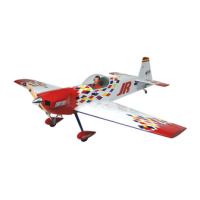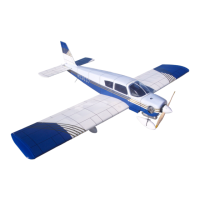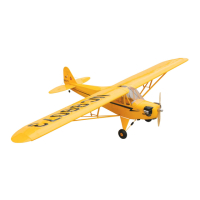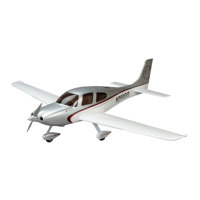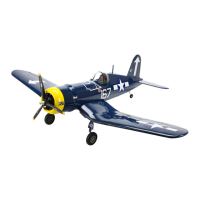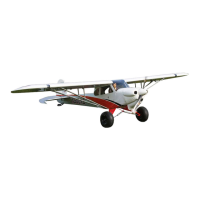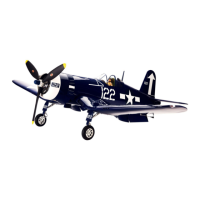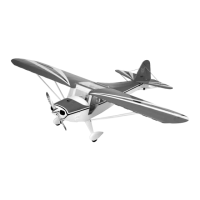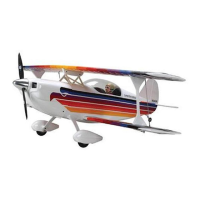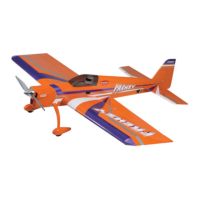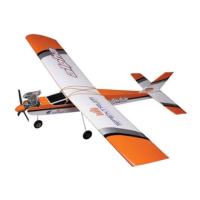
Do you have a question about the Hangar 9 Carden Aircraft Edition 89" Extra 300 Mid-Wing and is the answer not in the manual?
| Radio | 6+ channel |
|---|---|
| Flaps | No |
| Retracts | No |
| Wingspan | 89 inches |
| Approx. Assembly Time | 20+ hours |
| Scale | Semi-scale |
Explains hazard terms like NOTICE, CAUTION, WARNING used throughout the manual.
Explains the manual's structure and how to track assembly steps.
Emphasizes using only compatible parts to avoid damage or injury.
Advises on safe flying locations and practices.
Warns about keeping hands and objects away from the propeller.
Highlights risks associated with mishandling batteries, especially Li-Po.
Warns about choking hazards from small parts for children.
Inspect model, be aware of surroundings, plan flights.
Choose clear, safe flying locations.
Details wingspan, area, weight, engine size, and radio requirements.
Illustrates major parts of the aircraft for identification.
Lists part numbers and descriptions for major components, small parts, and optional items.
Explains common symbols used in the assembly instructions.
Lists compatible receivers, servos, and extensions.
Details EP motor components and required adhesives.
Lists necessary tools like covering iron, hex wrenches, and knives.
Details initial preparation steps before starting main assembly.
Guides receiver installation for EP and Glow/Gas systems.
Covers rudder servo placement, drilling, linkage, and thread hardening.
Details hinge alignment and ball link attachment for the rudder.
Covers linkage adjustment and attachment of tiller arm and bracket.
Covers elevator servo placement, drilling, and thread hardening.
Secures ball link and connects servo to elevator horn with a turnbuckle.
Covers aileron servo placement, drilling, and extension routing.
Secures aileron ball link, attaches control horn, and connects with turnbuckle.
Details installing the landing gear and fairings.
Covers installation of gas engine, muffler, and related components.
Installs ignition system and fuel system components for the gas engine.
Routes fuel tank overflow and assembles throttle/choke linkages and servos.
Installs canister muffler and routes vent line through cowl.
Drills engine access holes and installs the aircraft cowling.
Guides installation of electric motor, battery, and speed control.
Secures the battery tray and batteries within the fuselage.
Ensures batteries are secured and attaches cowl, propeller, and spinner.
Slides stabilizer tube and connects elevator servo, then secures the stabilizer.
Installs wing tube, connects aileron servo, and secures the wing to the fuselage.
Secures the pilot figure inside the cockpit using silicone adhesive.
Guides installation of optional side force generators to the wing tips.
Explains how to properly balance the model for flight.
Details setting control throws and rates for optimal performance.
Lists essential checks to perform before flying the model.
Outlines warranty coverage, exclusions, and how to obtain service.
Provides regional support contacts and disposal guidelines.
Details critical safety rules for model aircraft operations.
